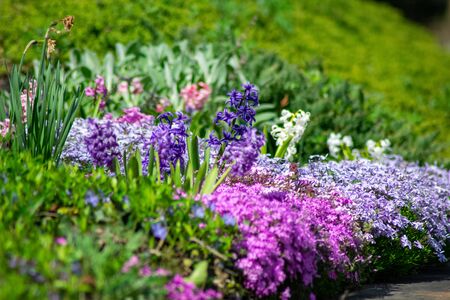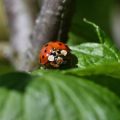Understanding the Importance of Native Wildlife in British Gardens
Encouraging native wildlife into your garden isn’t just a charming way to connect your family with nature; it’s an essential part of nurturing a healthy and harmonious outdoor space. British gardens, with their patchwork of hedgerows, wildflowers, and age-old trees, have long been sanctuaries for birds, bees, hedgehogs, and a whole host of enchanting creatures. By supporting local wildlife, you’re helping to maintain the delicate balance that keeps pests in check and plants flourishing. Native plants like foxgloves, bluebells, and hawthorn provide food and shelter for pollinators and beneficial insects, which in turn create a safer environment for children to explore. When we look after our little patch of green, we become caretakers of an entire miniature ecosystem—one where every beetle, bird, and blossom has its role. Through gentle observation and mindful gardening practices inspired by Britain’s natural heritage, families can inspire wonder in little ones while fostering biodiversity right on their doorstep.
Welcoming Wildlife with British-Friendly Plants
When it comes to inviting British garden wildlife into your outdoor space, the secret often lies in your plant selection. Just as every family has its favourite treats, so too do the birds, bees, and butterflies that flutter around our gardens. By thoughtfully choosing UK-native flora, you can create a vibrant and nurturing haven that supports local biodiversity—while also giving your family a wonderful chance to dig in together.
Native Flora for Local Fauna: A Family Guide
British wildlife thrives best among plants they recognise from their natural environment. From the cheerful song thrush to the busy bumblebee, every creature has its preferred menu. Why not gather your family and explore which native plants could become regular guests at your garden table?
| Wildlife | Favourite UK-Native Plants | Why They Love Them |
|---|---|---|
| Birds (e.g., Robins, Finches) | Hawthorn, Rowan, Holly | Berries and shelter; nesting sites |
| Bees & Pollinators | Foxglove, Wild Marjoram, Comfrey | Nectar-rich flowers for feeding |
| Butterflies | Buddleja (Butterfly Bush), Primrose, Nettles | Nectar sources and caterpillar food plants |
Sowing Seeds of Togetherness: Planting Schemes for All Ages
Designing planting schemes can be a delightful hands-on project for the whole family. Plan colourful borders or wildflower patches together—perhaps even dedicate a corner just for little gardeners to experiment! Not only does this encourage creativity and responsibility in young ones, but it also helps everyone connect more deeply with nature’s rhythms.
Avoiding Pest Problems While Encouraging Wildlife
The beauty of using native plants is that they’re well-adapted to local pests and conditions, reducing the need for chemical controls. Choose hardy varieties, rotate plant families each season, and let natural predators—like ladybirds and hedgehogs—do their work. This way, your garden stays both beautiful and balanced, providing a thriving space for wildlife without inviting unwanted pests indoors.

3. Safe Havens: Creating Habitats Without Inviting Trouble
Creating welcoming spaces for wildlife in your British garden can be a joyful family project, sparking children’s curiosity while teaching them about the delicate balance of nature. But how do you provide shelter for helpful creatures without rolling out the red carpet for pests?
Bird Boxes: Cosy Homes Up High
Start by installing bird boxes together, choosing spots that are high up and away from easy access points for cats or squirrels. Encourage little ones to decorate the boxes with non-toxic paints, making them both a haven for robins or blue tits and an art project. Always use well-ventilated designs and clear-out old nesting material at the end of each season to avoid harbouring mites or other unwelcome visitors.
Bug Hotels: Five-Star Lodgings for Helpful Insects
Building a bug hotel is like crafting a miniature woodland in your own back garden. Use natural materials such as bamboo canes, pine cones, and bits of bark—let children collect these treasures on local walks. Stack them securely in a sheltered corner. Position your hotel away from vegetable beds or play areas to avoid attracting too many critters close to where you don’t want them. Ladybirds and solitary bees will move in, helping pollinate plants and keep aphid numbers down—nature’s own pest patrol!
Log Piles: Secret Hideouts on the Ground
A log pile tucked beneath a hedge or shady tree offers shelter for hedgehogs, frogs, and beetles. Involve children in stacking logs safely, always keeping hands protected and supervision close by. Make sure piles are not right against your house or shed; this keeps woodlice and slugs from wandering indoors. Over time, watch the pile become a bustling hub of activity, perfect for curious minds eager to peek beneath the bark.
Nurturing Curiosity Safely
By thoughtfully placing wildlife habitats and involving children every step of the way, you create opportunities for learning and wonder without sacrificing harmony in your garden. With each bird song or ladybird discovery, children learn how small actions help living things thrive—while parents rest easy knowing unwanted guests are kept at bay.
4. Keeping the Balance: Natural Deterrents for Unwanted Pests
Every British garden is a tapestry of life, but when pests like slugs and aphids arrive in droves, it can feel more like an invasion than an ecosystem. The good news? You don’t need harsh chemicals to keep your patch peaceful. By learning from nature—and listening to the quiet wisdom passed down through generations—you can gently tip the balance back in favour of harmony.
Encouraging Natural Predators
Nature already has her own pest patrols. Inviting these allies into your garden is both effective and enchanting. For example, hedgehogs are famous slug-snackers, while ladybirds adore munching on aphids. Creating welcoming spaces for these helpers—like leaving a log pile for beetles or a small wild patch for frogs—can make all the difference.
| Garden Pest | Natural Predator | How to Attract |
|---|---|---|
| Slugs & Snails | Hedgehogs, Thrushes, Frogs | Log piles, shallow ponds, untidy corners |
| Aphids | Ladybirds, Lacewings, Hoverflies | Native wildflowers, bug hotels, avoiding pesticides |
| Caterpillars | Blue Tits, Wasps | Nesting boxes, flowering shrubs |
The Magic of Companion Planting
If plants could talk, they’d tell you about their friendships. Companion planting is an old British gardening trick where certain flowers and herbs are grown side-by-side to protect each other naturally. For example, marigolds release a scent that deters aphids and attracts helpful insects. Meanwhile, planting chives near roses can help repel greenfly.
Popular Companion Plant Pairs in Britain:
- Tomatoes & Basil: Basil helps ward off whitefly and enhances tomato growth.
- Carrots & Onions: Each helps mask the scent of the other’s roots from carrot fly and onion fly.
- Cabbage & Nasturtium: Nasturtiums lure caterpillars away from cabbages while adding a cheerful splash of orange to your beds.
A Parent-Child Gardening Moment:
Invite your little one to sprinkle marigold seeds around your veggie patch or help spot a ladybird on a leaf. These small rituals not only protect your plants but nurture curiosity and care—a gentle reminder that every creature has its place in the garden’s story.
5. Fun and Learning for All Ages
There’s something truly magical about sharing your garden with the whole family, each person discovering the wonders of British wildlife in their own way. Make wildlife spotting an adventure—create a simple checklist of common visitors like robins, hedgehogs, and ladybirds. Encourage children to keep a nature journal or draw what they see, sparking curiosity and observation skills. Involve everyone in gentle plant care: let little hands help sow wildflower seeds or water pollinator-friendly blooms, teaching responsibility while watching life flourish. For budding scientists, try mini-experiments such as setting up a log pile to observe which insects move in, or making homemade bird feeders from recycled materials. These activities nurture not just plants and creatures but also family bonds and a lifelong connection to nature. As you watch your garden grow together, you’ll find that learning and laughter blossom side by side—proof that every backyard can be a living classroom.
6. Respectful Observation: Enjoying Wildlife Without Disruption
British gardens are living tapestries, inviting both young and old to witness the wonders of nature up close. While attracting wildlife is rewarding, it’s essential to approach every encounter with a spirit of gentle stewardship. Here’s how families can enjoy garden visitors responsibly, ensuring a harmonious balance between curiosity and care all year round.
Encourage Quiet Curiosity
Teach children the art of patient watching—remind them that wildlife, from hedgehogs to blackbirds, often reveal their true selves only when they feel safe. Encourage little ones to use soft voices and slow movements, perhaps even playing a game of ‘statues’ when something special appears among the flower beds. This gentle approach reduces stress for animals and offers more authentic sightings.
Keep a Respectful Distance
Whether you’re observing a red fox at dusk or a bumblebee busy on lavender, maintain a comfortable distance. Use binoculars or set up a simple hide made from garden chairs and blankets for children to peep through. This not only protects your wild guests but also fosters a sense of respect for their space—a valuable lesson rooted in British countryside traditions.
Avoid Disturbing Nests and Habitats
Spring brings nests tucked into hedges and burrows beneath shrubs. Point out these secret spots without touching or peering too closely. Explain to children how every log pile, patch of nettles, or compost heap could be someone’s home. By leaving these habitats undisturbed, we allow wildlife to flourish safely alongside us.
Record Your Discoveries Together
Inspire budding naturalists by keeping a family nature journal or using a British wildlife identification chart. Jot down dates, weather, and notes about animal behaviours. This mindful record-keeping transforms fleeting moments into lasting memories and deepens everyone’s appreciation for seasonal changes in the garden.
The Joy of Gentle Stewardship
Ultimately, respectful observation is about nurturing wonder without causing harm. By fostering empathy and responsibility in young gardeners, we help create future custodians of Britain’s precious wildlife—ensuring our gardens remain vibrant havens for generations to come.


